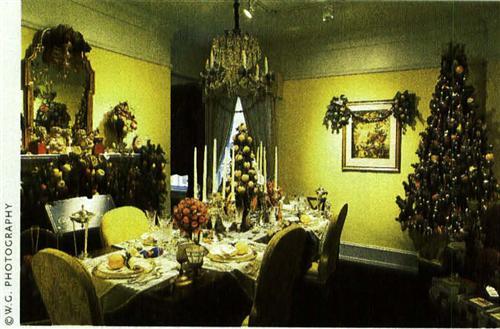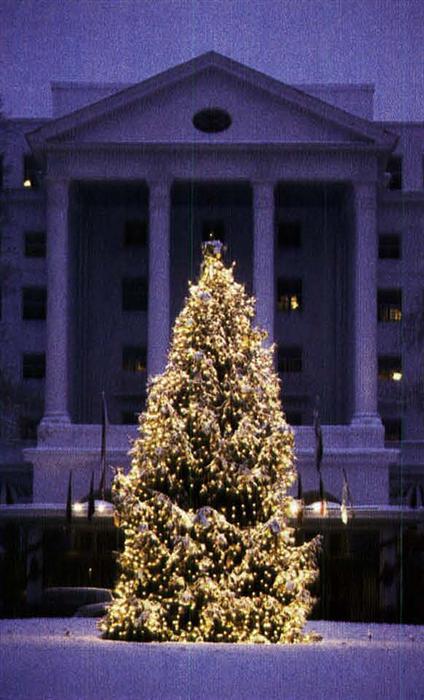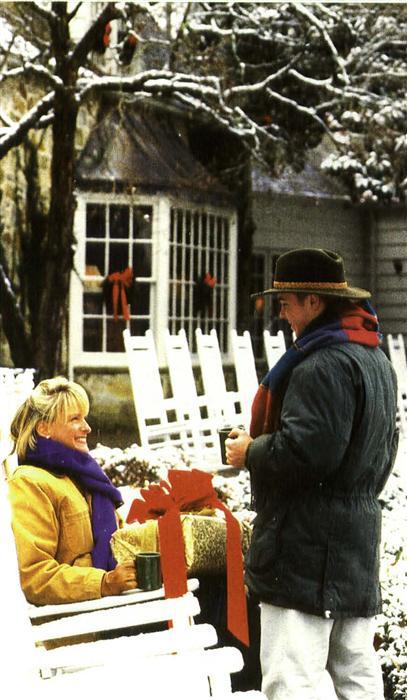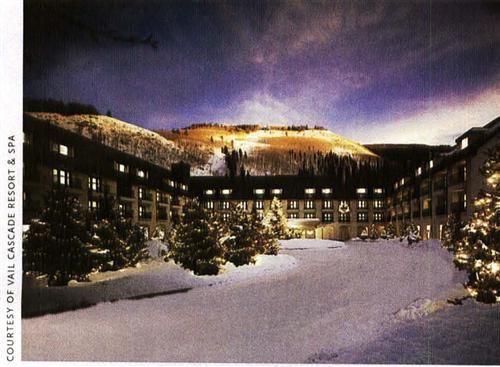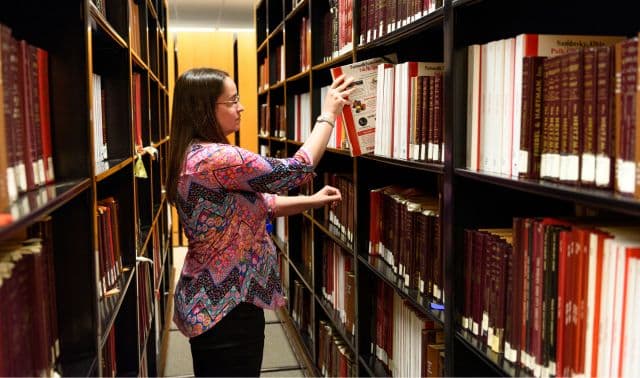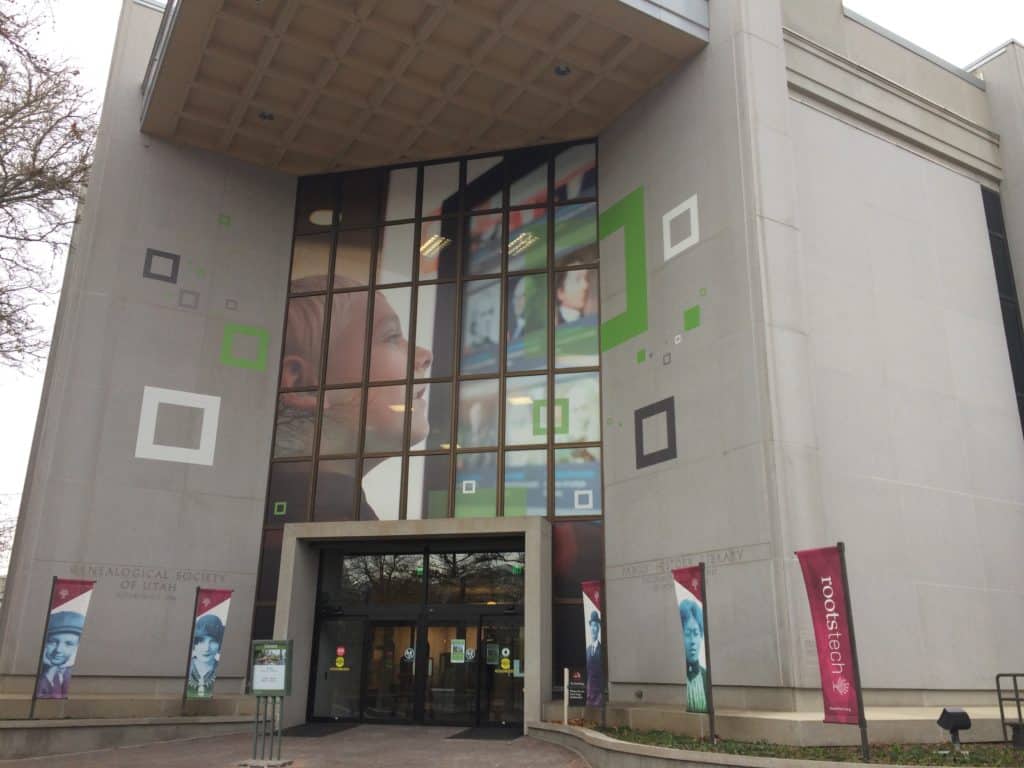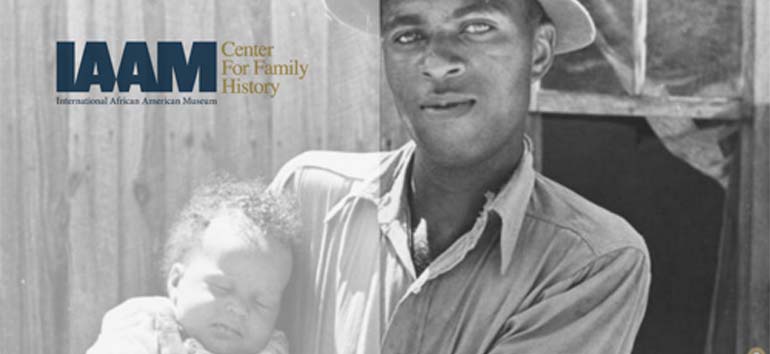This year, you won’t have to ask Aunt Penelope about the interesting green substance in her holiday “dessert.” You won’t have to ask yourself if droopy Uncle Eddie — droopy, getting louder Uncle Eddie — is on the verge of setting a North American snoring record.
Let a renowned pastry chef bake Aunt Penelope a nice cake instead. Discover how festive fun can keep Uncle Eddie wide-awake. Joy to the world! This year, you won’t have to touch the dishes.
But that doesn’t mean you have to take the clan to some soulless skyscraper or cookie-cutter motel. This season is nothing if not rich in heritage, and you can find unique resorts across the country that boast as much history as they do holiday lights. Whether you want to celebrate in surroundings that recall your immigrant roots or hang your stockings where yesterday’s barons of industry once slept, there’s a historic resort that’s right for you.
Best of all, many heritage-rich resorts are taking to heart a tenet of the holiday season — that it’s rewarding to give someone a nice package. Some resorts’ holiday-themed packages appeal to the pocketbook (stay two nights and get the third half off), while others appeal to the heartstrings (take unlimited rides in the horse-drawn carriage).
Plus, however handsome these historic places are year-round, during the holidays they really deck the halls. They leave no sense unsatisfied — guests can see holly in the hallways, smell pine trees in the parking lot, feel bows along the banisters and taste tapioca at the table. Here are seven resorts where you can celebrate the season in historical style.
The Homestead [Hot Springs, Va.]
Sprawling is a word that accurately describes the grounds of The Homestead, a Georgian-style mountain resort occupying 15,000 acres in the Allegheny Mountains of western Virginia. The word also describes many of the resort’s guests, who love to lie back and lounge in the property’s seven mineral springs.
Travelers have enjoyed the natural waters here — especially the 104-degree “hot springs” next to the hotel and the 98-degree “warm springs” four miles away — since the 18th century. By 1750, homesteaders had constructed wooden guest cabins near the springs. The first written account of the town’s history is from a diary by Dr. Thomas Walker, a medical missionary who traveled through the area (then part of the Ohio Territory) en route to Kentucky. On July 9,1750, he wrote: “We went to Hot Springs and found six invalids there. The spring is warmer than new milk and there is a spring of cold water within 20 feet of the warm one.”
As a growing number of curious visitors came to Hot Springs, Thomas Bullett, a lieutenant stationed at Fort Dinwiddie (a frontier outpost founded by George Washington), raised the town’s first inn in 1766. The Homestead’s modern hotel opened 80 years later. Its new owner touted that the resort’s springs could cure gout, rheumatism, liver disease, paralysis, enlarged glands and spinal irritations. Today, visitors still “seek the cure” at The Homestead, which boasts the country’s oldest European-style spa.
The Homestead’s wide-ranging Christmas and New Year’s activities are slated from Dec. 20 through Jan. 1. You can skate on the resort’s Olympic-sized ice rink located at the Mountain Lodge, enjoy a horse-drawn sleigh ride on the ski area’s lower slopes, take a hayride to a bonfire for storytelling, or listen to a bevy of musicians in the President’s Lounge. Other festive goings-on will include a Celtic Christmas show, hot chocolate and apple cider served nightly in the Solarium, and a KidsClub schedule of ornament decorating, movie watching, snowman making, holiday baking and scavenger hunting. On New Year’s Eve, you can ring in 2003 with elegant dining and dancing.
On your list of New Year’s resolutions, you might want to add “Come back to The Homestead this summer.” The resort is home to three championship golf courses (including the country’s oldest first tee in continuous use), six tennis courts, a four-mile trout stream, 100 miles of hiking and biking trails and a scenic shooting facility.
For room rates or details on Christmas and New Year’s events: (800) 838-1766, <www.thehomestead.com>.
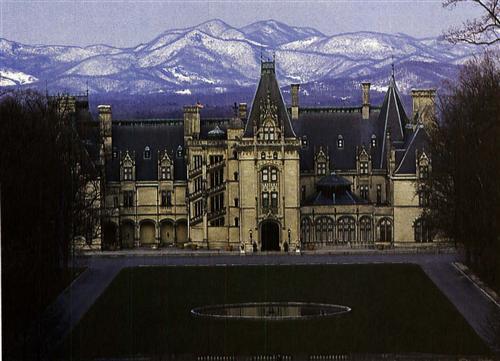
Patriarch to a large family (including 13 children and 37 grandchildren), the Commodore began a family custom of owning luxurious houses. When he died, he left most of his $100 million to William Henry Vanderbilt (1821-1885), his eldest son, who eventually doubled the family’s assets. Among William’s eight children was George Washington Vanderbilt, who opened Biltmore Estate in North Carolina on Christmas Eve 1895. His holiday celebration marked the formal introduction of the home widely regarded as the most ambitious ever conceived in America.
For six years, artisans labored to create an estate nestled in the Blue Ridge Mountains that would rival the great manors of Europe in architecture, landscape planning and interior design. Upon completion, the 250-room mansion featured four acres of floor space, 34 master bedrooms, 43 bathrooms, 65 fireplaces, three kitchens, an indoor swimming pool and priceless art and antiques.
More than a century later, Biltmore Estate still offers a luxurious escape from everyday life. You can stroll through its plush gardens, settle in the library for afternoon tea and feast on the chef’s daily creations (many of which are estate-raised) in the dining room. You also can savor award-winning vintages at Biltmore Estate Winery, which offers self-guided tours, seminars, cooking demonstrations and wine tastings. Be sure to pick up a bottle of commemorative Christmas wine, a special blend created just for the holidays.
Candles will be lit, fires will be stoked, and crystal and blown-glass ornaments will twinkle during Biltmore Estate’s Candlelight Christmas Evenings season (Nov. 6 through Dec. 31). Choirs and other musicians will share holiday tunes, some accompanied by the Banquet Hall’s pipe organ that dates to 1916.
For room rates or details on Candlelight Christmas Evenings: (800) 922-0084, <www.biltmore.com>.
After wealthy New Orleans plantation owner Stephen Henderson built the first private cottage in White Sulphur Springs, W.Va., in 1835, social elites came to the remote area for its breathtaking beauty and, more important, the chance to mingle with other social elites. One account tells of an aristocratic Southern family who brought “entire spring wardrobes, bottles of French brandy, a pack of cards and a convenient pistol and rifle for venison.”
If you stay at The Greenbrier — an exquisite 6,500-acre resort — today, it’s probably best to leave your pistol and rifle at home. After all, tasty venison these days is the result of a master chef, not a master marksman.
Food — canvasback duck and a side of terrapin, to be exact — was an important facet of The Greenbrier’s early history. In 1908, prominent West Virginians tried to persuade Edwin Hawley, the man who controlled the Chesapeake and Ohio Railway, to buy the resort property. They buttered him up with a “splendid Southern dinner” that also included mint juleps, Virginia corn and champagne. The strategy worked: Hawley purchased the property in 1910 and commissioned renowned New York architect Frederick Junius Sterner to design a modern, fireproof hotel that would be open year-round. Sterner completed the job in 1913.
After World War II, famous New York interior designer Dorothy Draper redecorated the hotel, using more than 30 miles of carpeting, 45,000 yards of fabric, 40,000 gallons of paint, 15,000 rolls of wallpaper and 34,567 decorative and furniture items. Today, The Greenbrier features 739 hotel rooms, numerous guesthouses and 16-foot windows.
It also features one incredible Cold War relic. In December 1958, construction began on a secret, 112,000-square-foot bunker carved more than 700 feet into the hillside under The Greenbrier’s West Virginia Wing. The bunker, known today as the Federal Government Relocation Facility, was designed to house the US Congress in the event of a national crisis. It closed in July 1995.
Guests can take daily tours of the bunker or enjoy more than 50 other amenities, including a renovated spa, indoor and outdoor tennis courts, walking and exercise trails, and trap-and skeet-shooting venues. Music, tea and cookies are offered daily in the Main Lobby, a tradition that began in 1931.
The Greenbrier’s special Christmas Package begins Dec. 20. The resort’s halls will be decked with thousands of poinsettias and other holiday decor. Guests can enjoy nightly music and dancing, the Gingerbread Ball on Christmas Eve, supervised programs for children, hot chocolate by the fire, a yule log ceremony and more.
A New Year’s Eve Package (Dec. 30 through Jan. 2) includes free champagne, noisemakers and balloons. On New Year’s Day, breakfast will be served from 9 a.m. to 1 p.m. in the Main Dining Room. That evening, the Gene Donati Orchestra will play in Colonial Hall, UBU will play in the Chesapeake Room and the Hal Walls Combo will play in the Old White Lounge.
For room rates or details on packages: (800) 453-4858, <www.greenbrier.com>.
Nemacolin Woodlands Resort & Spa [Farmington, Pa.]
In 1740, native Delaware Indian Chief Nemacolin carved a trail through the rugged Laurel Highlands between what today are Cumberland, Md., and Brownsville, Pa. Col. George Washington and Gen. Edward Braddock later widened the trail and used it successfully during the French and Indian War.
In the mid-1800s, Congress established the first national highway utilizing Nemacolin’s trail, extending it westward. Until railroads became more prevalent, the highway (now US Route 40) was the country’s major means of east-west transportation.
Nemacolin’s trailblazing feat helped the Laurel Highlands become a fashionable retreat for wealthy Pittsburgh industrialists and merchants in the early to mid-20th century. From 1937 to 1963, the family of Edgar J. Kaufmann (of Kaufmann’s department-store fame) lived in the area’s most famous home, architect Frank Lloyd Wright’s Fallingwater. Today, guests come from all directions to stay at Nemacolin Woodlands Resort & Spa, a 277-room resort that occupies 1,500 acres about 60 miles south of Pittsburgh.
The resort includes two main structures: the Lodge, an English Tudor-style design with oversized guest rooms and a historic mountain feel, and Chateau LaFayette, a more elegant, European-style building featuring vaulted ceilings, striking crystal chandeliers and two-story Palladian windows.
Regular activities at the resort include the 32,000-square-foot Woodlands Spa; two championship golf courses; the Equestrian Center, which encompasses pony rides and a regulation-sized polo field; the Adventure Center, which is home to a ropes course and a climbing wall; mountain-biking and hiking trails; and 14 specialty shops.
Nemacolin Woodlands Resort & Spa decorates for the holiday season, but focuses on its New Year’s celebration, which this year runs from Dec. 28 through Jan. 1. On Dec. 28, you can enjoy a night filled with fireworks, a marshmallow roast, hot chocolate and cookies, and other family-friendly fun at the Sundial Lodge. On Dec. 29 and Dec. 30, you can participate in afternoon magic classes, cooking demonstrations and wine tastings. New Year’s Eve will feature a black-tie dinner and entertainment by the Roger Humphries Band. The celebration concludes with a champagne brunch on New Year’s Day.
For room rates or details on New Year’s events: (800) 422-2736, <www.nemacolin.com>.
Blackberry Farm [Walland, Tenn.]
In the 1930s, when Florida and Dave Lasier were en route from Chicago to the Georgia coast, they chanced upon a cozy slice of eastern Tennessee. After selecting the spot for their dream home — a mere 10 minutes from Great Smoky Mountains National Park — Florida snagged her silk stockings in a thicket of blackberry bushes. The name Blackberry Farm was born.
In 1952, the Lasiers sold their property to the Jarvis family from Maryville, Tenn. In 1976, the Jarvises sold it to Knoxvillians Sandy and Kreis Beall, founders of the Ruby Tuesday restaurant chain. During the past three decades, the Bealls have transformed Blackberry Farm from a country house into a world-renowned hideaway that sits on 1,100 acres. Each of the 44 rooms in the resort includes English antiques, a fireplace, elegant fabrics, fine art and feather beds. Its reputation: Ritz-Carlton in the woods.
In moderate weather, Blackberry Farm offers a variety of activities, including a cooking school, hiking, mountain biking, horseback riding, tennis and one of the country’s best fly-fishing programs. You also can enjoy canoe trips on Walland Pond or a day at the Aveda Concept Spa, which features hot stone therapy, massages, pedicures, manicures and more. In nearby Great Smoky Mountains National Park, you can visit Cades Cove, a 2,500-acre valley that includes an outdoor museum of pioneer life in the 1800s.
But Blackberry Farm is at its visual peak during the winter. A row of white rocking chairs on the veranda overlooks meadows and ponds framed by pine forest. Twinkling lights and festive ribbon seem to be everywhere. Snow often hangs over the treetops, and smoke from wood-burning fireplaces scents the air. The resort’s Christmas events schedule (Dec. 1 through Jan. 1) includes bonfires under the stars, gingerbread-house building, fly-fishing demonstrations, gourmet picnic lunches, wine tastings in the Maple Cottage Cellar and more. New Year’s events (Dec. 27 through Jan. 1) include horse-drawn carriage rides, guided nature hikes, a New Year’s Eve dinner in the Main House Dining Room and a celebration in Chestnut Cottage.
For room rates or details on Christmas and New Year’s events: (800) 648-2348, <www.blackberryfarm.com>.
The American Club [Kohler, Wis.]
When workers ate together in the old dining room of The American Club in the first part of the last century, the scene was an energetic mix of Austrian, German, Russian and French accents. The building was constructed in 1918 as an immense rooming house for single, male immigrant workers of the Kohler Co. Workers paid $27.50 a month — roughly a quarter of their pay — for a single room, board and “plain washing.”
Walter J. Kohler, who led the Wisconsin-based kitchen-and-bath firm in the early 20th century and was the son of an immigrant himself, commissioned the building’s construction. The men for whom The American Club was built are gone now, but Kohler’s philosophy — that workers always should be surrounded by reminders of America and the spirit of patriotism — has been followed faithfully. The 100-foot flagpole and American flag are exactly where they were in 1918.
The American Club became an upscale resort in 1981, and today it’s the only AAA five-diamond resort in the Midwest. But the immigrants’ origins still are celebrated within (and sometimes on) the building’s walls. What once was the laundry room now is The Immigrant Restaurant and Winery. At the opposite end of the building is The Horse & Plow, an informal dining room that displays antique farm tools and hundreds of photographs. Pictures of bygone days adorn The American Club’s oak-paneled hallways. One picture shows men in starched-collar shirts and women in long white dresses posing stiffly at a picnic held at nearby Ravine Park.
Each of the 185 guest rooms in the resort’s main hotel honors a famous American, replete with a portrait and framed memorabilia. An additional 52 guest rooms are located in the Carriage House, a historic building decorated with one of the country’s largest collections of original horse-and-carriage artwork.
The American Club’s Tudor-style exterior evokes the look of a grand manor house in the English countryside. The main hotel’s layout resembles a capital letter E — with three three-story interconnected parallel wings separated by four garden courtyards. Year-round activities at the resort include Sports Core, an 85,000-square-foot fitness and racket club that includes a salon; Kohler Water Spa; River Wildlife, a 500-acre private wilderness preserve with 20 miles of hiking and cross-country skiing trails; a meandering river ideal for canoeing, kayaking and fishing; heated carriage rides; and antiques shopping. The American Club also is home to Whistling Straits golf course, site of the 2004 PGA Championship.
The resort will hold its Ultimate Holiday Party on Dec. 21. You can enjoy a gala evening with an hors d’oeuvres reception, dinner buffet and dancing to the Front Page News. Christmas Kohler, a collection of Yuletide delights such as strolling carolers, charming decorations and shopping deals, runs throughout December. Then you can ring in 2003 with cocktails, a four-course dinner in the Great Lakes Ballroom and dancing to music by Whole of Soul.
For room rates or details on the Ultimate Holiday Party: (800) 344-2838, <www.destinationkohler.com>.
Vail Cascade Resort & Spa [Vail, Colo.]
Vail, Colo., basically was born in 1957, when Pete Seibert and Earl Eaton — two former ski troopers in the US Army’s 10th Mountain Division — climbed a mountain above the valley and realized its potential for skiing. With more than seven miles of mountain to ski, the city has some serious slope. It’s a bit young, however, to be steeped in history.
But in less than 50 years, Vail has grown from a town with no doctor, one gondola and three ski lifts (even the highest summit was known as No Name Mountain) to a rapidly growing haven for winter-sports enthusiasts. In many ways, the city’s history is happening now.
Today, the buzz in Vail has less to do with super-giant slaloms and more to do with super-relaxing spas. Vail Cascade Resort & Spa is an alpine escape where nature-inspired treatments can help you relax. To that end, the resort’s newest amenity is Aria Spa & Club, a $4 million, 10,000-square-foot luxury spa addition that opened last October. Spa-goers can enjoy custom massages, hydrating body wraps, therapeutic body scrubs and whirlpool baths.
The resort includes 300 guest rooms with mountain or courtyard views, 26 spacious suites, 65 condominiums and 13 private residences. It also has two ski shops that offer clothing, equipment, accessories and rentals; a pool and hot tubs; a general store; and a movie theater.
Besides the usual winter fare available at Vail Cascade Resort & Spa — skiing, snow-boarding, dog sledding, horse-drawn sleigh riding, boutique shopping — the resort will hold its Cascade Christmas events from Dec. 21 through Jan. 1. Activities will include the sixth annual Cascade Village tree lighting, cookie and stocking decorating, food and wine tasting, and caroling. The resort will hold its New Year’s Eve Gala in the Cascade Ballroom, where you can dance to a variety of bands and raise a glass at midnight.
For room rates or details on packages: (800) 282-4183, <www.vailcascade.com>.
From the November 2002 issue of Family Tree Magazine

